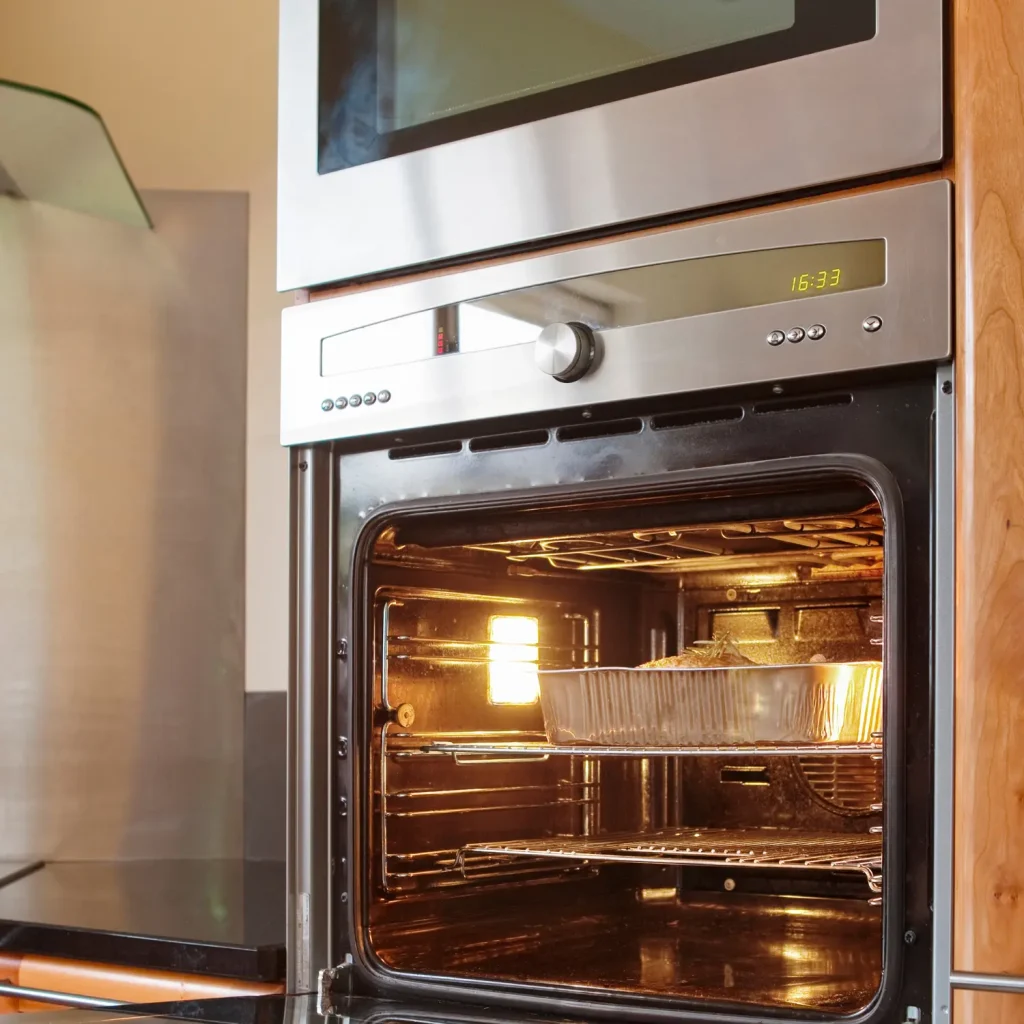
Your kitchen’s heart lies in the stove and oven, where culinary masterpieces are born. But, neglecting safety can turn this creative hub into a danger zone. Fires, burns, and other accidents can easily happen with a momentary lapse in attention. Protect your home and your loved ones with these essential stove and oven safety tips.
Importance of Stove and Oven Safety
Think safety and prevention first. Here’s why taking stove and oven safety seriously matters:
- Fire Prevention: According to the National Fire Protection Association, cooking is the leading cause of residential fires and fire-related injuries.
- Preventing Burns: Hot stovetops, ovens, and spilled food can cause painful and even severe burns.
- Protecting Your Family: Understanding stove and oven safety is vital for everyone in the house, especially vulnerable children and pets. Call us for gas stove safety precautions
Stove Safety Tips
Let’s start safe cooking practices, focusing on your stovetop:
- Stay Attentive: Never leave the stove unattended when cooking. If you need to step away, turn the burners off.
- Keep Flammable Items Away: Create a safety buffer by keeping curtains, towels, pot holders, and other flammable materials away from the stove.
- Watch for Gas Leaks: Periodically check for any signs of gas leaks – a rotten egg smell or hissing sound. If detected, evacuate the area immediately and call your gas company or emergency services.
- Childproof Your Kitchen: Utilize child safety locks on stove knobs, or consider knob covers that prevent accidental turning.
- Properly Position Handles: Turn pot and pan handles toward the back of the stove to prevent them from getting knocked over.
- Use Correctly-Sized Cookware: Ensure pots and pans fit snugly on burners for stability and even heat distribution.
- Clean Up Spills: Wipe up spills and grease immediately to prevent fires and slips.
Oven Safety Tips
Keep safety in mind throughout your baking and roasting sessions:
- Maintain a Clean Oven: A clean oven significantly reduces the risk of fires from built-up grease and food debris. Schedule regular cleanings.
- Say No to Foil on the Bottom: While lining your baking sheets is fine, avoid placing foil on the bottom rack of the oven. It can block heat flow, alter cooking, and potentially damage the heating element.
- Supervision is Key: Like the stove, never leave the oven unattended while in use.
- Beware of Oven Mitts: Always wear dry oven mitts when handling hot dishes. Wet or damp mitts transfer heat quickly, causing burns.
General Safety Tips for Both Stove and Oven
Apply these safety measures to both your stovetop and oven:
- Carbon Monoxide Detectors: Install carbon monoxide detectors, especially near the kitchen, for added safety in homes with gas appliances.
- Fire Extinguisher Ready: Keep a fire extinguisher within easy reach in your kitchen, and familiarize yourself with its proper use.
- Understand Your Appliances: Read the manufacturer’s instructions thoroughly for your specific stove and oven to understand their features and safe operation.
- Keep it Serviced: Proper maintenance prolongs the life of your appliances and helps with early detection of any potential safety issues.
What to Do in Case of an Emergency
Should the unthinkable occur, act decisively:
- Small Grease Fire: If a grease fire flares up in a pan, don’t use water! Smother the flames with a metal lid or baking soda. Turn off the burner and let it cool completely.
- Oven Fire: Turn the oven off and keep the door closed to cut off oxygen. If the fire persists, evacuate and call the fire department.
- Clothing on Fire: Remember the tried-and-true method of “stop, drop, and roll.”
Conclusion
Stove and oven safety isn’t complicated but demands your awareness and action. Integrating these practices into your cooking habits ensures your kitchen remains a safe and enjoyable space.
Gas Stove Safety Shut Off
Gas Stove
A gas stove is a common appliance in many households. It provides efficient cooking but also poses certain risks.
Gas Leak
One major risk is a gas leak, which can lead to fire hazards and health issues due to gas inhalation.
Safety Shut Off
To mitigate these risks, modern gas stoves come equipped with safety shut-off mechanisms.
Shut Off Button
There's typically a shut-off button or switch located on the stove. Pressing it shuts off the gas supply.
Alarm
In case of a gas leak, some stoves also trigger an alarm to alert the user.
Ventilation
Proper ventilation is crucial when using a gas stove to prevent gas build-up in the kitchen.
Emergency
In case of emergency, such as a strong gas smell or suspicion of a leak, immediately shut off the gas supply and ventilate the area. Contact emergency services if necessary.
